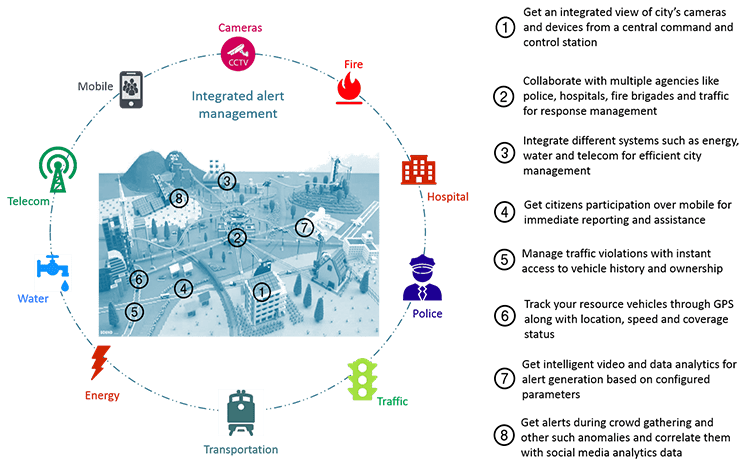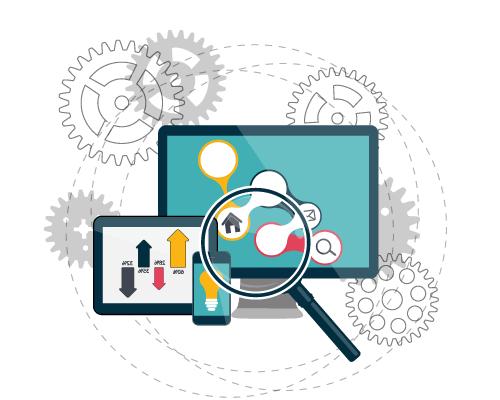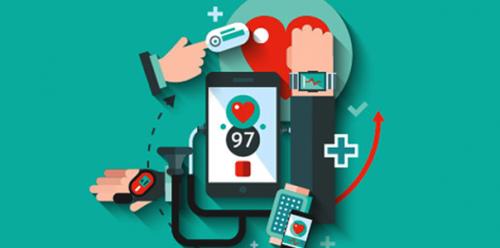How Can IoT Make Cities
How can Internet of Things technology and IoT powered devices help to reduce energy consumption levels and improve the management of modern cities.
If we are to believe the predictions made by Gartner, the global analyst firm, by 2020 there could be more than 20 billion "things" connected to the Internet and they would be sending data all over the world. As per one estimate, in the near future, there might be over 40 billion IoT powered devices, with each active user using 30 such devices. As technologies advance and more and more businesses, the world over, gear up to tap the financial benefits offered by a highly lucrative IoT market, the scope of IoT applicability is increasing by leaps and bounds.
Some of the common use cases of using Internet of Things today are:
Internet of Things (IoT) is more of a concept rather than a technology. When we talk about IoT technology, we actually refer to the conglomeration of various technologies and tech enabled devices using IoT concepts. It can include tangible devices such as connectors, sensors, cables, computer hardware, mobile phones, display panels etc. as well as non-tangible parts like software and WiFi required to function the devices. In a true sense, an IoT technology stack is nothing else other than a range of technologies, standards and applications, which help in connecting various types of objects to the Internet, to gather valuable insights as well as to enhance the scope of applications by connecting things, gathering data and analyzing it to produce useful results or actions.
When IoT enabled devices are integrated into the infrastructure of towns and cities, they create a potential to revolutionize the way most people live their daily lives - By making cities more accessible, safer and easier to navigate.
What is a smart city?
A smart city typically uses different types of electronic data-collection sensors to supply information used for managing assets and resources in a more efficient manner. This can include any type of data collected directly or indirectly from citizens, devices, as well as from various types of assets. The data is analyzed to monitor and manage transportation and traffic systems, water supply networks, power plants, waste management, information systems, law enforcement, hospitals, schools, libraries and other community based services.
If we are to believe the predictions made by Gartner, the global analyst firm, by 2020 there could be more than 20 billion "things" connected to the Internet and they would be sending data all over the world. As per one estimate, in the near future, there might be over 40 billion IoT powered devices, with each active user using 30 such devices. As technologies advance and more and more businesses, the world over, gear up to tap the financial benefits offered by a highly lucrative IoT market, the scope of IoT applicability is increasing by leaps and bounds.
Some of the common use cases of using Internet of Things today are:
- Tracking behavior for real time marketing
- Enhanced situational awareness
- Sensor driven decision analytics
- Process optimization
- Optimized resource consumption and
- Instantaneous control and response in complex autonomous systems
Internet of Things (IoT) is more of a concept rather than a technology. When we talk about IoT technology, we actually refer to the conglomeration of various technologies and tech enabled devices using IoT concepts. It can include tangible devices such as connectors, sensors, cables, computer hardware, mobile phones, display panels etc. as well as non-tangible parts like software and WiFi required to function the devices. In a true sense, an IoT technology stack is nothing else other than a range of technologies, standards and applications, which help in connecting various types of objects to the Internet, to gather valuable insights as well as to enhance the scope of applications by connecting things, gathering data and analyzing it to produce useful results or actions.
When IoT enabled devices are integrated into the infrastructure of towns and cities, they create a potential to revolutionize the way most people live their daily lives - By making cities more accessible, safer and easier to navigate.
What is a smart city?
A smart city typically uses different types of electronic data-collection sensors to supply information used for managing assets and resources in a more efficient manner. This can include any type of data collected directly or indirectly from citizens, devices, as well as from various types of assets. The data is analyzed to monitor and manage transportation and traffic systems, water supply networks, power plants, waste management, information systems, law enforcement, hospitals, schools, libraries and other community based services.

The concept of smart city integrates information and communication technology (ICT) with various physical devices connected to a network - the Internet of things or IoT - to make city operations more efficient and provide quality services to citizens. The smart city “technology” facilitates city officials to interact directly with the community and infrastructure so they can monitor what is happening within the city and how the city is evolving.
Making cities “smart” with IoT
There are no rules to define a smart city. The general conception of a smart city is a populated urban area using different types of electronic data collection devices and/or sensors to generate information used to manage assets and resources in an efficient manner. Typically, a smart city offers core infrastructure and gives a decent quality of life to its local citizens in addition to a clean and sustainable environment. Therefore, cities have to be envisioned and planned to become “smart.”
Making cities “smart” with IoT
There are no rules to define a smart city. The general conception of a smart city is a populated urban area using different types of electronic data collection devices and/or sensors to generate information used to manage assets and resources in an efficient manner. Typically, a smart city offers core infrastructure and gives a decent quality of life to its local citizens in addition to a clean and sustainable environment. Therefore, cities have to be envisioned and planned to become “smart.”

Here’re a few characteristics one can find in smart cities.
Structural health of buildings
Structural health of buildings

Many cities have historical monuments, buildings and heritage sites which need to be properly maintained and protected at all times. A common threat affecting the majority of such buildings and sites is the effect of weather and external agents which spoil the exteriors and weaken the structure over a period of time. The parts of a building prone to impact of external agents can be identified and a database of the building's structural integrity can be maintained using IoT. Data is collected from sensors placed in various parts of the building. The nature of data comprises of inputs obtained from sensors recording the vibrations and minute deformations occurring in the building's walls and support structure due to stress, the extensity of atmospheric agents, temperature and humidity levels.
This eliminates the need to have the entire building tested periodically by human operators. Moreover, the data collected by the IoT systems from such monuments and buildings could prove to be very... Read more.
This eliminates the need to have the entire building tested periodically by human operators. Moreover, the data collected by the IoT systems from such monuments and buildings could prove to be very... Read more.








Comments